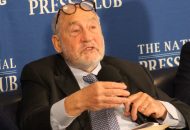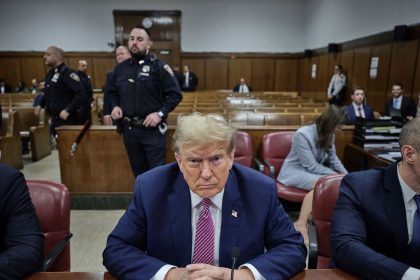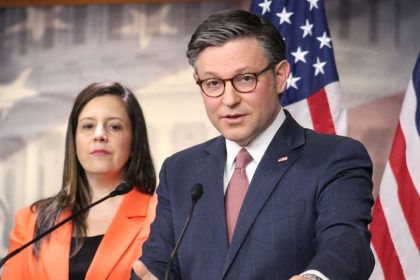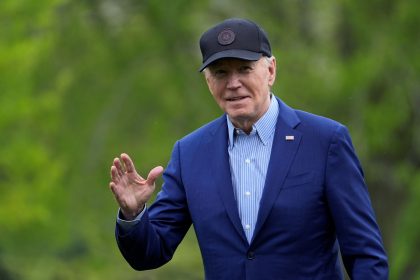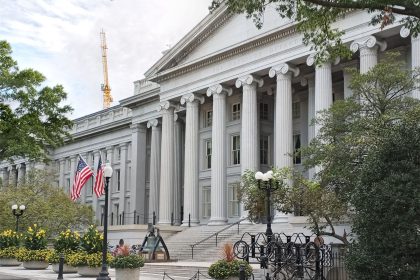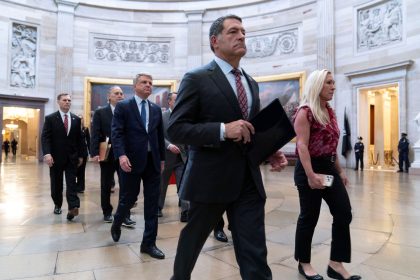Democrats See Winning Back Rural Vote as Doable Post-Midterms
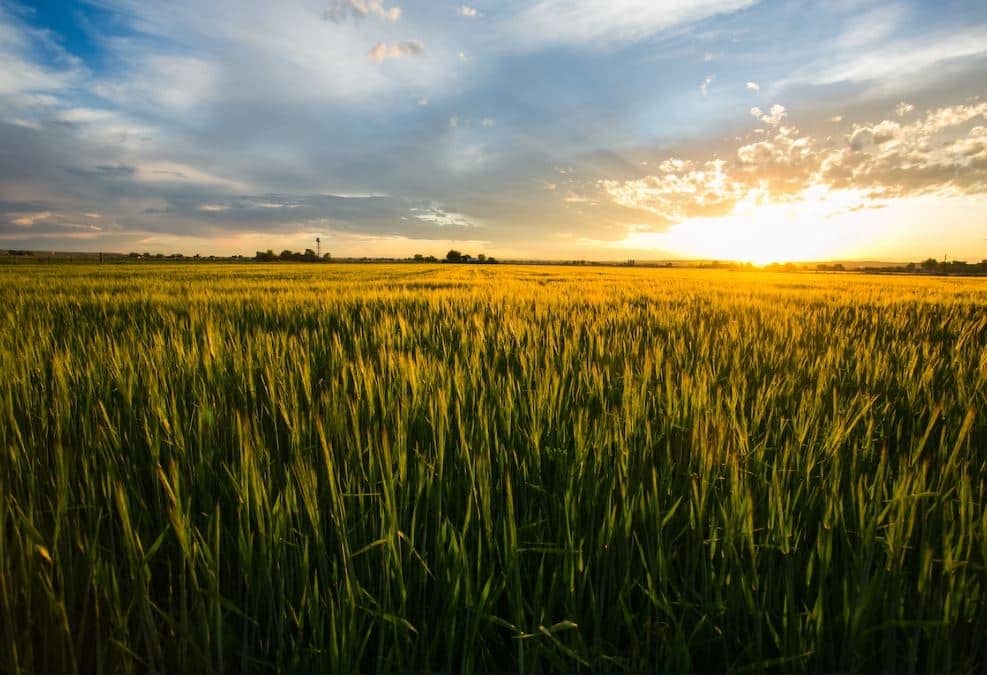
NATIONAL HARBOR, Md. — The roar resounded through the Riverview building of the Gaylord National Resort and Convention Center on the banks of the Potomac River.
There was no air of threat about it, but one could imagine any number of causes for the volume of sound that now poured through the wall like it was made of mesh and into what had been an earnest, but relatively quiet session on climate change at the Democratic National Committee’s summer meeting.
“It’s for Jon Tester,” said someone who peaked out the meeting room door. “He’s addressing the Rural Council next door.”
The climate advocates continued the best they could until the cheers and hand clapping finally diminished 10 minutes later.
While other Democratic heavyweights would visit the individual meetings during the four-day long event, including DNC Chair Jaime Harrison and Second Gentleman Doug Emhoff, no one was more of a rock star to the Rural Council than the Democratic senator from Montana.
A full-time farmer — he and his wife Sharla continue to work the 1,800-acre farm near the small town of Big Sandy on which he grew up — in addition to being a U.S. senator, Tester has long tilted against the windmill that is the Democratic Party’s “loss” of rural America.
As the cheers attested, Tester firmly asserted that Democrats could take rural America back from the Republican Party, if only they took responsibility for doing so.
As he wrote in his 2020 autobiography, “Grounded: A Senator’s Lessons on Winning Back Rural America,” Donald Trump won in the nation’s vast heartland in 2016 and 2020 because he “spoke directly to rural America” while “most Democrats ignored it.”
“Democrats need to understand that we cannot give up on rural America,” he continued. “Just as FDR did a century ago, we have no choice but to reach out and bring all of America along. After all, it saved a nation.”
Tester urges Democrats hoping to make inroads in rural America to stray from their comfort zones when they get home and talk to voters of all stripes, he also urged them to really listen to the concerns and ideas of rural voters.
“Showing up at the Iowa State Fair every four years doesn’t count. Paying attention to only rural swing states doesn’t count either,” he’s written.
Tester’s message is one the members of the Rural Council embraced wholeheartedly. Like him, they believe that regardless of what happens on Nov. 8, this is ripe time in the history of the nation for Democrats to turn back to rural America: the struggling factory towns and coal towns where people fear an end to fossil fuels will spell an end to whatever ability they currently have to keep their heads just above water.
And Tester’s prescription for a Democratic revival is simple: reclaim the mantle of fiscal responsibility, don’t overthink your message — he goes with “opportunity for everyone,” and finally, give people in rural America a reason to vote for your candidates.
The lingering question among council members and other rank-and-file attendees after Tester left the room was how they, specifically, could turn those words into action.
The Downward Spiral
Perhaps the most telling slide shown the morning of the Rural Council meeting was the one depicting the dizzying downward spiral of support Democrats have experienced in rural areas during presidential contests since former President Bill Clinton was elected to office.
In 1996, the year he ran for and won his second term, Clinton won in 1,117 rural counties, 50% of the total.
In 2008, then Sen. Barack Obama won 455 rural counties, or just 23% of the total, and in 2020, Joe Biden won 194 rural counties, a woeful 10% of the total.
Getting a definitive answer to the question of why this has happened is difficult. After the Rural Council meeting, the woman who had highlighted those statistics was asked what accounted for the sharp decline.
“I know why it happened,” she said, then promptly spun on her heels and walked away.
Others pointedly said the Democratic Party had turned its back on rural America as it focused on other key areas of support like the nation’s cities and suburbs.
“We’re seeing it again with Beto O’Rourke’s campaign in Texas,” said one attendee who declined to give a name.
In 2018, when he was running for the U.S. Senate against incumbent Republican Ted Cruz, O’Rourke visited all 254 Texas counties.
In the end, O’Rourke lost to Cruz by roughly 215,000 votes overall. Though O’Rourke outdistanced Cruz in the counties that make up bigger cities and suburbs, he lost by a total of about 441,000 in rural Texas.
This year, as he runs for governor against incumbent Republican Greg Abbott, O’Rourke has again been visiting rural communities; many haven’t seen a Democrat campaigning in their neck of the woods for years.
But the perception, the unnamed attendee at the rural council meeting said, is that O’Rourke is strong on initial contact with the rural community, but then largely forgets it in the final weeks of his campaigns to gin up the vote in the more developed parts of Texas.
Others in the meeting said it’s not necessarily the candidates who are to blame, but factors largely out of their control.
One gentleman from Nebraska said political organizing is difficult in rural states because people are spread so far apart and going door to door to garner support for a candidate is nearly impossible.
“As a result a lot of people have given up and so you find a lot of rural counties with a poor or no organization at all,” he said.
Another person at the meeting suggested the decline of the local newspaper is also keeping Democrats from regaining a foothold in rural America.
A study released in June by Northwestern University’s journalism school found that over 360 newspapers in the United States have gone out of business since just before the start of the pandemic — that’s a pace of about two closures per week.
But even more bracing is the fact that pace is largely unchanged from what is was in the years immediately before the pandemic.
Overall, 2,500 newspapers in the United States — a quarter of them — have closed since 2005, the study said. And the country is set up to lose one-third of its newspapers by 2025.
“The problem is in the absence of those newspapers, people turn to the larger news organizations that are largely just megaphones for opposing political views and false narratives; and they’re basically echo chambers for whatever your point of view is,” a young woman sitting in the front row said.
Figuring Out Where They Fit In
Later, after the crowd thinned out, a young woman from a large Western state agreed to offer her thoughts on the situation on background.
Newly married and unquestionably a blue dot in a historically crimson state, she began talking about how the results of the 2016 election had “surprised” many people in the Democratic Party.
Asked what particularly surprised her, the woman said it was the combination of the policies from both parties, as well as the prioritization by the Democrats, specifically, of environmental and climate change issues that did not include an economic plan to replace lost jobs in rural places.
The other thing that became very evident that year was the growing reliance on tech tools by campaigns in places where voters simply didn’t have the internet access or bandwidth to see them.
“But that’s just a kind of snapshot of the challenges the party faced and continues to face,” she said. “It’s a multifaceted issue that goes back many years.”
Asked what it would take to win back rural America in her view, the young woman said, “policies that prioritize rural people and places while also strengthening the Democratic brand.”
“The Democratic Party is leveraging existing structures to reinvigorate local Democratic committees and to build local alliances to tell the stories of what Democrats are doing. The most important thing is for Democrats to show up and they are doing that now,” she said.
“The other challenge we routinely face involves a very strong right wing presence in local media — especially talk radio. When people only hear from Republicans and the Republican perspective, it’s all they know. We have to combat on several fronts — appearing on those shows, having our own more progressive shows, and showing up in every available medium,” she added.
Could the GOP Be Peaking?
Democrats, of course, aren’t the only one’s analyzing the party’s slide in rural America. The Economic Innovation Group is a public policy shop in Washington whose website says it does “independent research” aimed at forging “a more dynamic and inclusive community.”
“We are a completely bipartisan organization,” said Kenan Fikri, EIG’s director of research, when The Well News caught up with him recently.
“We don’t have political clients or anything like that. In fact, our primary audience is often members of the media, who are just trying to understand and contextualize the political results they report and share with the country as we try to better understand ourselves.
“I guess you could say our specialization is trying to better understand the country’s economic geography and that gets us into a lot of political analysis because people are eager for insights that help them make sense of what they’re seeing,” he said.
When it comes to Democrats “losing” rural America and the Republicans gaining it, Fikri said it’s important to understand that the shift — what he called a “recalibration” — was a long time in the making.
“As you look at the data as we do, you see that at some point along the line, the Democrats became the party of metropolitan America and Republicans became the party of rural America with the most graphic illustration being a list, starting with the nation’s most populous counties and extending down to its least populous county.
“If you can visualize this, what you find is that there’s an almost clean break, about a quarter way down the list between the places that vote Democratic and this long tail of smaller places that overwhelmingly vote Republican.
“How that happened is the subject of a good book that I’ve neither read nor written, but what I can tell you is that while Trump was certainly an accelerant of these trends, he was not the originator of these dynamics,” Fikri said.
“As it happens, at the same time that our analysis was starting to show this political realignment, we also saw economic inequalities start to break along those lines too. And this goes back to the 1990s,” he said. “During that decade, we experienced a period of very balanced economic growth. In fact, across the country, a lot of small towns, small cities and rural areas were growing faster than big cities.
“Then you get to the 2000s, and we had a housing boom, which I think masked a lot of underlying shifts in the economy. Fast forward to the 2010s. The first five years of that decade were essentially the recovery period from the Great Recession.
“This was during this period when what you might call the superstar metropolitan areas really started to grow quite quickly, while very little economic activity was occurring in places that became known as left behind and otherwise just disaffected. And those were the people, living in those places, who were prime to embrace some kind of narrative,” he said.
“So you have these various cultural forces and economic forces and political realignments coming into the 2010s, and that’s what led us to where we are today,” he said.
But for Fikri and his researchers, that’s hardly the end of the story. They believe the pandemic delivered such a big shock to the economy that the status quo of the 2010s is already crumbling.
“For instance, we’re seeing a lot of rural areas growing quickly again, and jobs are plentiful,” he said. “Incomes are rising faster in many rural areas than they are in metropolitan areas. And at the same time, we’re seeing population growth shifting away from the cities as more young people work remotely and people are moving to new destinations.
“The question is how this will all shake out with inflation hanging over everything at the moment and appearing to be uppermost in voters’ minds.”
Asked whether Republicans simply hit upon a better message for the era, or if the Democrats, unintentionally or not, “left” rural voters behind, Fikri paused for a moment to think.
“I think one thing you have to remember is that the growth pattern of the 1990s into the 2000s was something we were seeing across the developed world,” he said. “I mean, in the 1990s, the Democrats were ascendant, as was Tony Blair and New Labour in the U.K., and everything kind of favored these highly educated, knowledge economy superstar cities.
“So I think that to some extent, that maybe the Democrats were slow in realizing that there was a problem, and that they were losing the rural and small town votes,” he said.
“At the same time, culturally speaking, the parties became less diverse and less able to speak genuinely to voters who didn’t [look] like the majority of members in the party.
“That, I think, has been one of the great strengths of candidates like Tim Ryan in Ohio, who is a long-time representative now running for Senate, and who, I think we can all agree embodies something that the Democratic Party as a whole has lost.
“As to whether the Republican Party offered rural voters a better message … I personally don’t think they did, but I think the Republican Party remains better aligned with voters in these rural areas,” he said.
“That said, what we might call ‘classic Republicanism’ is hard to find in rural America. Instead, what you see the party doing is elevating candidates who are just endemic to the environments they now represent. And that makes for a closer connection as well.”
But Fikri went on to suggest these developments don’t necessarily represent a new status quo.
“In fact, we’ve just noticed a kind of peak in the extremes, if you will,” he said.
“In both the rural and urban areas, that suggests that we’re coming into a period where what most people want is moderation. They want problems to be solved. They want to live in a safe and prosperous place. And they’re a little tired of hating everyone.
“So looking to the future, this is something both parties can speak to and feel they face some pretty good prospects for success. I mean, at some point everyone has to acknowledge that both parties went to extremes, with positions that were broadly disfavorable to the center on a range of issues.
“What we’re seeing is there’s a growing demand for moderation coming out of the exhaustion everyone feels after the pandemic and the divisiveness of the years prior to it,” he said.
Fikri also sees a potential weakening in the impact of redistricting involving rural communities, suggesting that the pandemic inspired shifts in population even while the 2020 census was occurring, and noting that those population shifts are continuing to the present.
“It’s going to make for a very interesting postdoc to do after the midterm elections,” he predicted.
“I mean, redistricting was done off the 2020 census and throughout the pandemic, we saw people decamping from cities to suburbs and exurbs … changing the composition of some rural communities after at least some of these redistricting lines were done.
“I suspect that many of those who held the pens during redistricting would cut the lines differently today than when they drew up their maps, just based on the new information that we have,” Fikri continued.
“Some seats, I’m sure, will be less safe than intended, based on how people started to move and how political inclinations have started to shift over the past two tumultuous years.
“I imagine what we’re going to see at the county and even the state level over the next few elections are some surprising shifts in who actually lives where and how the voting patterns of certain areas have potentially changed,” he said.
“For instance, a state like Montana has for a long time seemed predisposed to grow more purple every election cycle; a lot more people move there from out of state,” he said.
“What’s not clear is whether more liberal people or more conservative people have moved there … and that adds a real air of unpredictability in terms of the results we’re going to see on the local level coming out of the midterms in a couple of weeks.”
Fikri emphasized that while Americans have been “re-sorting” themselves in terms of where they live since the census was taken, small scale surprises in election results in a county or election district might not do much to change the outcome of the midterms.
“I think the projections, which have been for close contests, will hold, as I don’t see a fundamental realignment coming down the pike this year or next,” he said. “I think both parties probably have to go through a bit more of a reinvention to broaden their coalitions and appeal.
“And it’s also not clear to me yet who is going to get there the fastest,” he continued. “It seems like the Democrats are trying to make sure they don’t alienate the moderates, whereas Republicans are seizing the inroads they made with Hispanic voters and trying to capitalize on that.
“So I think more has to happen — and more data has to be collected and analyzed — before we know how this all shakes out in 2024,” he said.
A Sense of Long-Term Optimism
Back at the DNC meeting, the young woman speaking on background conceded that “Democrats have absolutely lost a lot of ground in local party infrastructure over the past decade-plus.
“Fortunately, significant progress is being made on that work right now. Part of the challenge was the lack of recognition of these changes/losses. Building local strength and capacity is now a focus of the work,” she said.
The woman also said she was heartened by the fact a few state leaders chose to feature their rural work at the final session of the DNC meeting, and that “rural is being mentioned more and more in these settings.”
“It is also important to note that the Biden administration and Democrats in Congress are making transformational investments in rural America,” she said. “We hope to work directly with state and local parties and volunteers to keep building this ground game in rural America.
“The goal of this effort is to build durable Democratic infrastructure at the local level and to start recruiting and supporting more community leaders, electing more Democrats up and down the ballot, and winning more counties. We expect results in 2024, but that will only be the start. This will involve a fundamental shift in how we organize and mobilize,” she concluded.
Dan can be reached at [email protected] and at https://twitter.com/DanMcCue.










